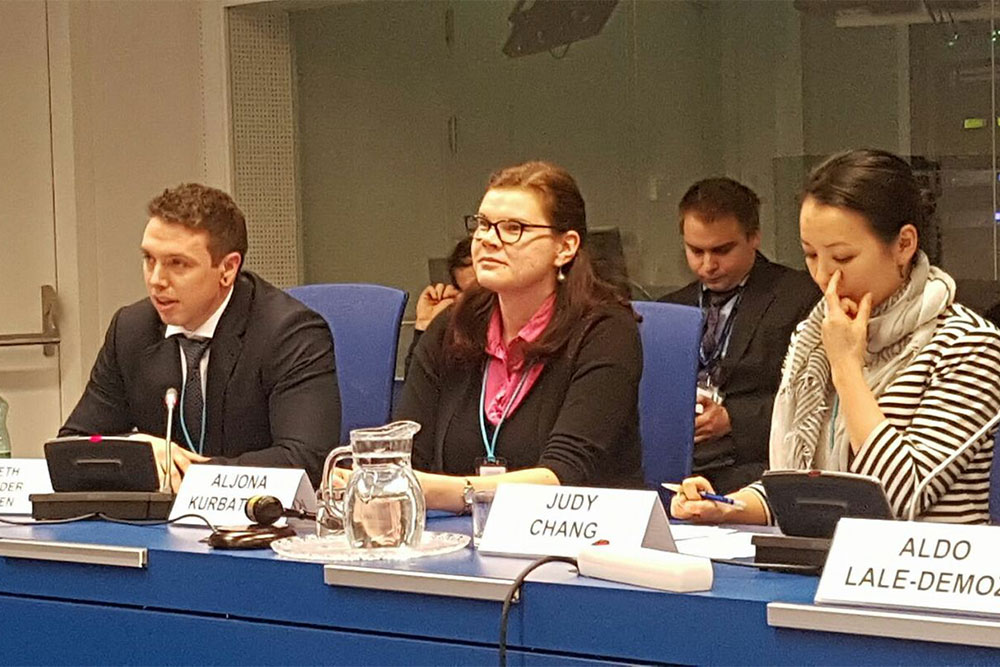Your excellences,
ladies and gentlemen,
colleagues and friends,
I wish to give my thanks to the organizers for inviting me and asking me to speak on this very important topic. Especially relevant for people with substance use problems, but also for their partners, their friends, their families and consequently for the community as a whole.
And let me just for a moment quote Søren Kierkegaard:
«If One Is Truly to Succeed in Leading a Person to a Specific Place, One Must First and Foremost Take Care to Find Him Where He is and Begin There.
This is the secret in the entire art of helping.».
In addressing the topic of this event, it is necessary to say that the country where I am from, Norway, has a low prevalence of new HIV-diagnoses among people who inject drugs.
Eight people were diagnosed in 2016, 8 in 2015, and 7 in 2014[1]. In the nineties, the situation was quite different. I vividly remember close friends of my father dying from AIDS when I was a child.
In my academic work, I have studied several annual reports and protocols from drug treatment centres from this time. And I have been saddened to read how the residents organized special HIV therapy groups to help each other cope with being infected.
According to treatment- and mortality multiplications, we estimate that Norway has approximately 9000 so called problematic opioid users and 8000 injecting drug users. This is quite severe for a country of only five million people. The overdose mortality rate is even famous for being high. Therefore it is especially interesting how, with these problems, we have managed to curb the spread of HIV among drug users.
Most people agree that the most important events in this regards have been the following
- Providing methadone maintenance treatment for heroin addicts
- Establishing Needle exchange programs,
- Providing information and diagnosing but equally -and possibly most- important;
- There was a change in attitude and behaviour among people who injected drugs; the awareness of responsibility to protect oneself and the people around yourself; using condoms when having sex or, if you were infected and shared a needle, you let people know and you were the last one to use the shared needle.
So this has been important. With the permission of madam chair I would like to move to another –I believe- fitting topic, hepatitis C.
Hep C is of great concern for people injecting drugs. Due to its characteristics, both in sneaking up on people, but also for not being a “hot topic” for politicians or people in general, we call it “the silent epidemic”. My suspicion is that it does not gather attention since it does not spread to the general population, but stays within the population of injecting drug users, still a stigmatized group. And therefore we are happy that the state bearing parties are signalling that they want to stop punishing people with drug problems and provide treatment in stead.
In Norway, as many as 20 000 people might carry the disease.
Important work is being done, much by users’ organizations.
One of the organization for patients in Opiate Replacement Therapy, proLAR, use rapid antibody tests to check if users have antibodies, and if indicated, they are told to be considered for treatment.
The association for humane drug policies has funded a comic to provide information to drug users about how to avoid being infected. Many drug users don’t think about not sharing water, cooking pans etc. The main character in the comic, Hepatina, is based one of the people from the association. Go to hepatitiscomics.com and you can download the comic in English.
Reinfection after treatment is a real problem. Therefore, RIO is funding research on this, which will result in a topical PhD.
And we push health authorities to prioritize treatment for more patients than today, preferably with Direct-Acting AntiViral medicines. Today these are mostly reserved for patients that have developed liver cirrhosis.
We must always hold government accountable. This is impossible if they do not fund organizations like ours. The carriers of hep c would not have had a voice and I think it would forever have been a “silent epidemic”.
Therefore, to go back to Kierkegaard. To counter morbidity among drug users, you must begin where they are, support their NGOs, and actually listen to us when we speak.
Thank you for your time.


